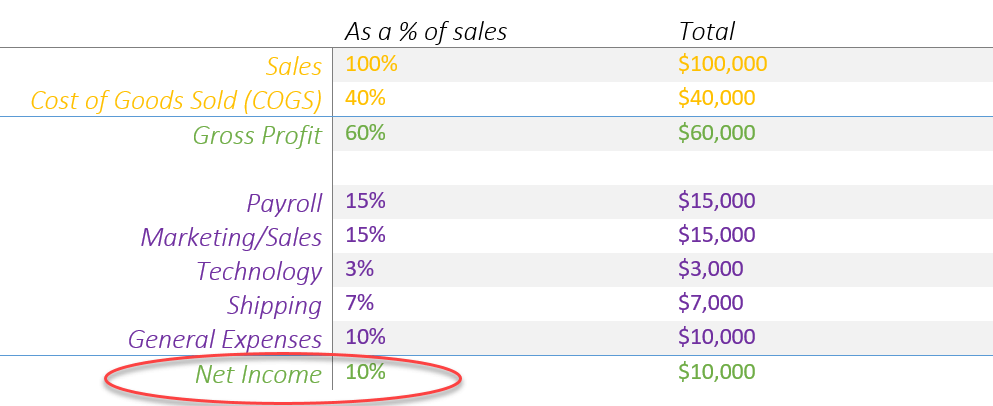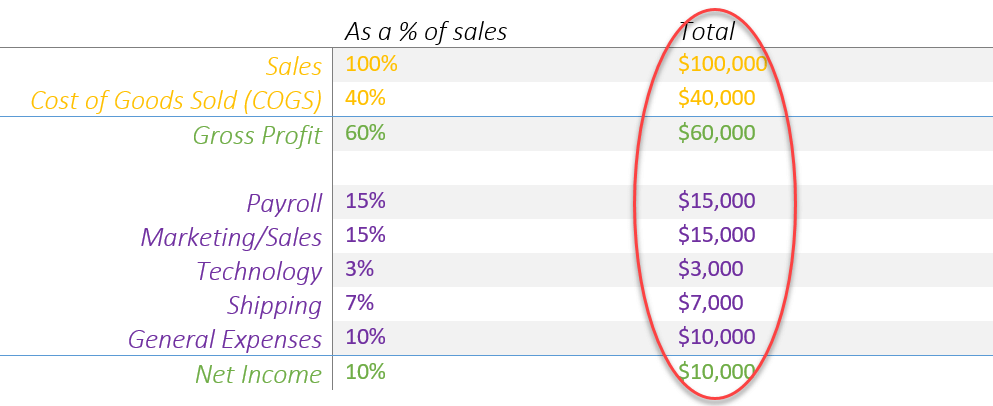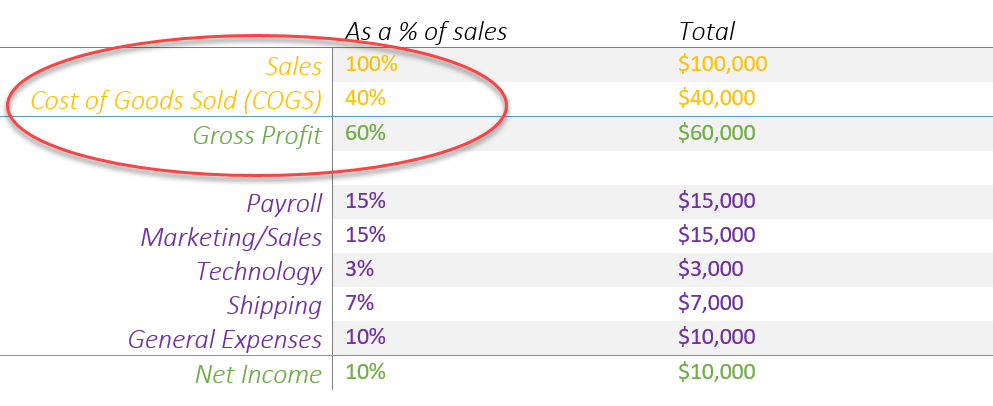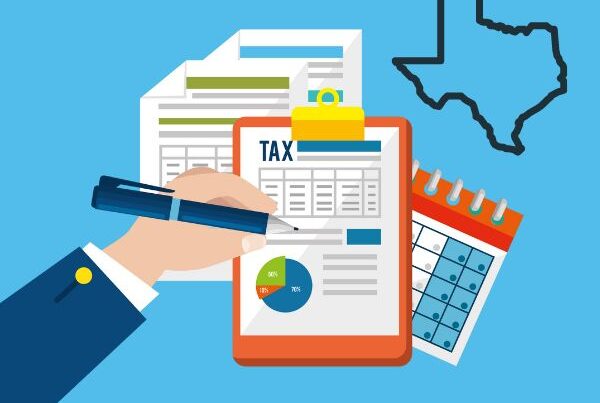When done right, a budget for your ecommerce company is a key force for successfully growing your business. This blog talks high-level about constructing a successful ecommerce budget by using a profit and loss statement as your guide. A well-constructed budget will influence important decisions as you start and grow your business. Here are the steps:
- Calculate an accurate and consistent gross profit margin
- Determine a healthy net profit margin for your business
- Fill in the rest of your expenses as a percentage of sales
- Set a sales goal and turn percentages into dollar amounts
You can download our free ecommerce budgeting template here.
You can also watch our instructional ecommerce budgeting video that takes you through our template and dives into the content in this blog even deeper.
Step 1: Calculate an accurate and consistent gross profit margin
Gross Profit = Sales – COGS
Gross Profit Margin = (Gross Profit)/Sales
Ecommerce businesses are run from their gross profit (GP = Sales – COGS). As a benchmark, ecommerce businesses typically run on a 50-60% gross profit margin (GPM). Of course, this number varies depending on the types of product you sell. More importantly for ecommerce budgeting, your GPM needs to be both accurate and as consistent as possible.
Accurate GPM
You may think an accurate GPM is straightforward because sales and COGS seem like they are straightforward and easy. We wish it was that simple. Because of challenges with accurate costs and timing problems, COGS is often miscalculated by ecommerce businesses, leading to an inaccurate GPM. Dialing in your COGS is very important for the health of your business. So, make sure you get it right. Click here to learn about calculating COGS.
An inaccurate GPM will lead to either over or under-budgeting expenses for your business. Over-budgeting will result in unexpected losses that may be difficult to recover from in early stages. And under-budgeting will result in slower growth or poor operational processes for your business.
Consistent GPM
Ecommerce budgeting becomes very difficult with an inconsistent GPM. Just like calculating an accurate GPM, a consistent GPM relies on COGs. Controlling COGS as much as possible is the secret to a consistent GPM. The first financial trend you should always be watching is your GPM. If it’s declining quickly, or even slowly, immediate action is necessary to secure the long-term viability of your business.
As your GPM fluctuates drastically, you never really know what percentage of sales you should spend on operating your business. But when you can control your gross profit margin, you have the power of knowing your available money (as a percentage of sales), with a small degree of error. Now your budgeting just became SUPER powerful and predictably achievable.
Step 2: Determine a healthy net profit margin
Net Profit Margin = Net Income/Sales

Your net profit margin is your net income (bottom line) divided by your sales. A healthy business runs on about a 10% NPM. But if you are growing your business, you may strategically operate at a lower or negative margin. When budgeting, you need to decide at what NPM you’d like to be running your business. Be careful if you plan on operating at a loss or low margin. Consider the following:
- Do you have outside funding? This could include personal funds, loans, or investors.
- How long can this outside funding cover losses?
- When you no longer want to operate at a loss, will you need to make operational changes?
- How can you prepare to run your business with a positive net profit margin?
Once you decide on a healthy net profit margin for the success of your business, it’s time to hash out the rest of your budget.
Step 3: Fill in the rest of your expenses as a percentage of sales
Now it’s time to look at the overhead expenses between your gross profit (sales minus COGS) and your net income. If you have an accurate and consistent GPM and have decided on a healthy NPM, you know how much you can spend on these expenses as a percentage of sales:
GPM – NPM = % of sales to spend on other expenses
Let’s say you have a 60% GPM, and you want to operate at a 10% NPM. This means you have 50% of sales to spend on expenses below your gross profit. You can decide how to categorize these expenses based on your business, but here are typical categories of expenses for an ecommerce business:
- Payroll
- Marketing
- Sales
- Administration
- Platform and website fees
- Customer service
- Technology
These expenses should stay fairly consistent in relation to sales. So, you have 50% of sales to divvy out between these categories, which you can adjust during different times and needs in your business.
 Step 4: Set a sales goal and turn percentages into dollar amounts
Step 4: Set a sales goal and turn percentages into dollar amounts
After the third step, you will now have a budget for your ecommerce business based on percentages of sales. The final step is to set a sales goal, and then turn percentages into dollar amounts.

- How much product can your business handle selling?
- What has your sales been in the past?
- What sales trends have you experienced?
- Do you have any new sales streams planned?
Finally, after deciding on a sales goal for your ecommerce business ($100K in the example above), you can now put dollar amounts to your entire budget, based on the percentages you have already assigned. We recommend dividing your budget out by months and checking in on your sales goal at least quarterly. This will help you make decisions throughout the year. Are you meeting your sales goals and need to adjust accordingly? How much can you spend on Google Ads each month? Can you hire that email campaign consultant? How much can you pay yourself? Can you hire a couple of new customer service reps? Can you update your website?
If you’ve followed our outline in constructing a budget for your ecommerce business, you’ll have quality answers. Best of luck!





 Step 4: Set a sales goal and turn percentages into dollar amounts
Step 4: Set a sales goal and turn percentages into dollar amounts

